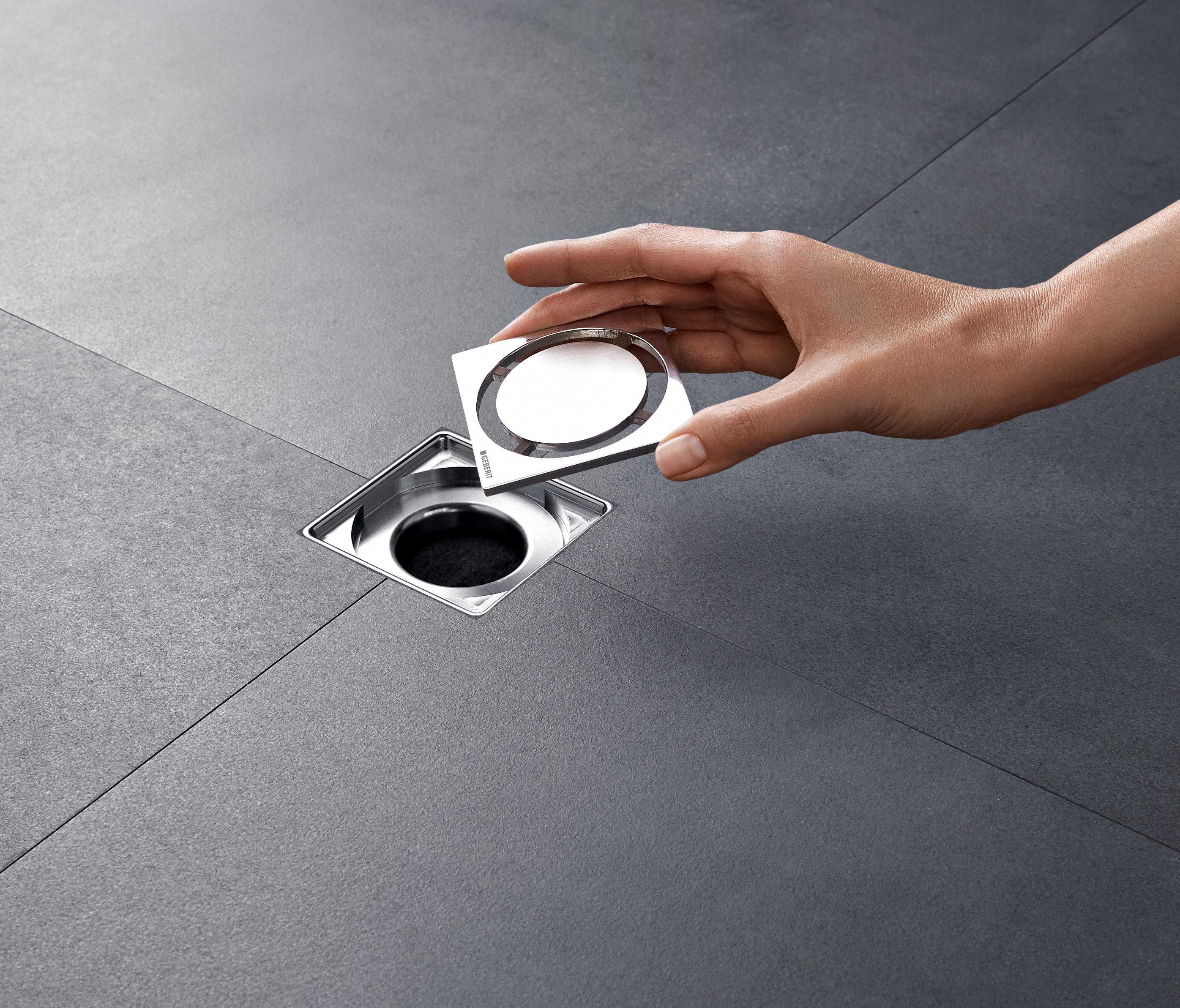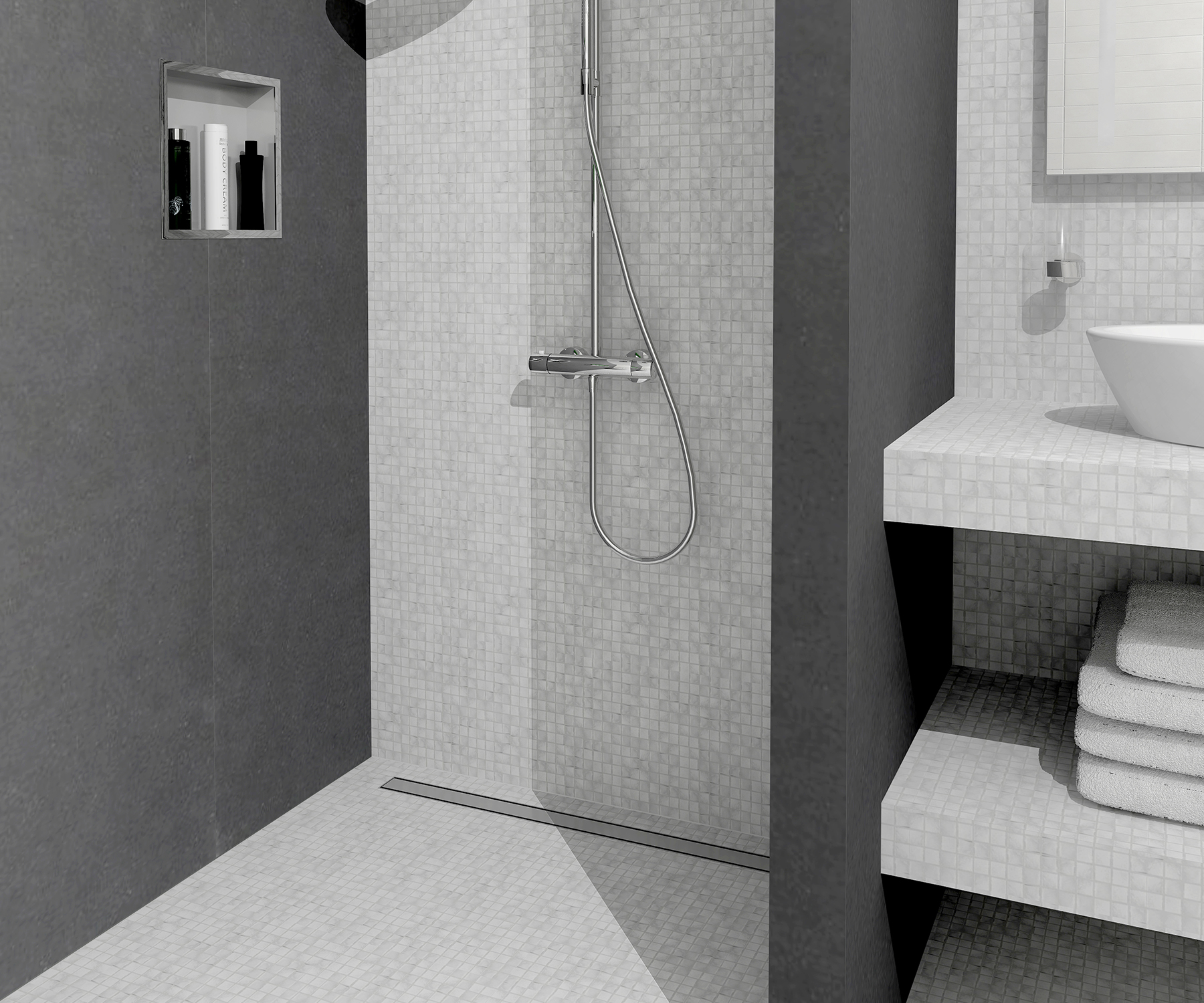Understanding Bathroom Floor Drains

Bathroom floor drains are essential components of any bathroom, playing a crucial role in maintaining hygiene and preventing water damage. These drains effectively remove wastewater from the bathroom floor, ensuring a clean and dry environment. They are designed to collect and channel water away from the bathroom floor, preventing pooling and potential damage to the subfloor and surrounding areas.
Types of Bathroom Floor Drains, Drains in bathroom floor
Bathroom floor drains come in various designs and materials, each with its own unique characteristics and advantages. Choosing the right type of drain depends on the specific requirements of the bathroom and the desired aesthetic.
- Traditional Floor Drains: These drains feature a simple, circular design with a grate covering the opening. They are typically made from cast iron, brass, or stainless steel and are often found in older homes. They are generally affordable and durable, but they may not offer the same level of aesthetics as modern designs.
- Linear Floor Drains: Linear drains, as the name suggests, have a long, narrow design that runs along the edge of the shower or bathroom floor. They are often made from stainless steel or other modern materials and are known for their sleek and contemporary appearance. Linear drains can effectively collect water from a larger area, making them ideal for larger showers or bathrooms. They are also easier to clean than traditional drains due to their open design.
- Tile-In Floor Drains: Tile-in floor drains are designed to be seamlessly integrated with the surrounding tile flooring. They have a flat, low-profile design that allows for a flush finish, creating a more aesthetically pleasing look. These drains are typically made from stainless steel or other durable materials and are often available in various finishes to match the tile design. Tile-in drains offer a modern and elegant appearance while maintaining functionality.
How Bathroom Floor Drains Work
Bathroom floor drains work by channeling water away from the bathroom floor and into the drainage system. The process involves several key components:
- Drain Body: The drain body is the main part of the drain, which houses the opening and the trap. It is typically made from cast iron, brass, or stainless steel.
- Grate: The grate covers the drain opening and prevents debris from entering the drain. It is typically made from stainless steel or other durable materials and can be easily removed for cleaning.
- Trap: The trap is a curved pipe that sits below the drain body. It is filled with water, which acts as a seal, preventing sewer gases from entering the bathroom. The trap is an essential component of the drain, as it ensures that the bathroom air remains fresh and free from unpleasant odors.
- Drainage System: The drainage system connects the drain to the main sewer line. It typically consists of pipes that run under the floor and carry wastewater away from the bathroom.
The water in the trap prevents sewer gases from entering the bathroom, creating a healthier and more pleasant environment.
Common Issues with Bathroom Floor Drains

Bathroom floor drains are essential for keeping your bathroom clean and dry. However, these drains can be prone to various problems that can lead to unpleasant situations. Understanding common issues and their causes will help you take preventative measures and ensure your bathroom remains a haven of hygiene and comfort.
Clogged Drains
Clogged drains are one of the most common problems associated with bathroom floor drains. This occurs when hair, soap scum, and other debris accumulate in the drainpipe, restricting water flow.
- Hair: Hair is a major culprit in drain clogs, as it tends to clump together and trap other debris.
- Soap Scum: Soap scum, a sticky residue formed from soap and hard water, can build up on drainpipes and contribute to clogs.
- Debris Accumulation: Other debris, such as dirt, sand, and even small objects, can also contribute to clogs.
Leaks
Leaks around bathroom floor drains can be caused by various factors, including:
- Damaged Drainpipe: Cracks or holes in the drainpipe can lead to leaks.
- Loose Connections: If the drainpipe connections are loose or improperly sealed, leaks can occur.
- Improper Installation: If the drain was not installed correctly, it could lead to leaks.
Slow Drainage
Slow drainage can be a symptom of a partial clog or other underlying issues.
- Hair and Debris Accumulation: A build-up of hair, soap scum, and other debris can slow down water flow.
- Mineral Deposits: Hard water can leave mineral deposits on drainpipes, restricting water flow.
- Root Intrusion: In some cases, tree roots can grow into drainpipes, causing blockages.
Preventing Common Issues
Regular cleaning and maintenance are crucial for preventing common issues with bathroom floor drains.
- Regular Cleaning: Regularly clean the drain with a drain cleaner or a plunger to remove hair and debris.
- Hair Catcher: Install a hair catcher in the drain to prevent hair from entering the drainpipe.
- Soap Scum Prevention: Use a soap scum remover regularly to prevent build-up.
- Professional Inspections: Have a plumber inspect your drainpipe regularly to identify and address potential problems before they worsen.
Troubleshooting and Repairing Bathroom Floor Drains: Drains In Bathroom Floor
A slow-draining or clogged bathroom floor drain can be a major inconvenience. Understanding the common issues and how to troubleshoot and repair them can help you address the problem effectively. This section will guide you through the steps involved in identifying the cause of the problem and fixing it.
Troubleshooting Common Drain Problems
When a bathroom floor drain is slow to drain or completely clogged, the first step is to identify the source of the blockage. This can be done by using a plunger or a drain snake.
- Using a plunger: A plunger is a simple and effective tool for dislodging minor blockages in the drain. Place the plunger over the drain opening, ensuring a tight seal. Push and pull the plunger vigorously up and down several times to create suction and pressure. This can help dislodge hair, soap scum, or other debris that may be obstructing the drain.
- Using a drain snake: If a plunger doesn’t work, a drain snake is a more aggressive tool for clearing stubborn blockages. A drain snake is a long, flexible cable with a hook or auger at the end. Insert the snake into the drain opening and carefully maneuver it through the pipe. The hook or auger can snag and remove the blockage. Be careful not to push the blockage further down the drain.
Repairing Damaged or Leaking Drains
If the drain is damaged or leaking, it may need to be repaired or replaced. Here are some common repair methods:
- Replacing drain parts: If the drain is leaking due to a faulty drain stopper, strainer, or other component, these parts can be replaced. First, turn off the water supply to the bathroom. Then, remove the existing drain parts and replace them with new ones. Ensure the new parts are compatible with the existing drain assembly.
- Replacing the entire drain assembly: If the drain is severely damaged or leaking from multiple points, it may be necessary to replace the entire drain assembly. This involves removing the old drain and installing a new one. Be sure to use a drain assembly that is compatible with the existing plumbing system.
Common Drain Issues, Causes, and Solutions
| Issue | Potential Causes | Recommended Solutions |
|---|---|---|
| Slow Draining | Hair, soap scum, grease, debris buildup | Use a plunger, drain snake, or chemical drain cleaner. |
| Clogged Drain | Hair, soap scum, grease, debris buildup, foreign objects | Use a plunger, drain snake, or chemical drain cleaner. If the clog is severe, consider replacing the drain assembly. |
| Leaking Drain | Cracked or broken drain parts, loose connections, worn-out seals | Replace damaged drain parts, tighten connections, replace worn-out seals. |
| Odor | Bacteria buildup, sewer gas, drain trap dry-out | Clean the drain, pour baking soda and vinegar down the drain, ensure the drain trap is filled with water. |
